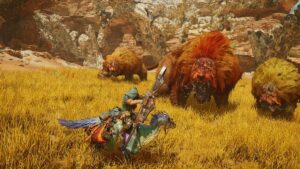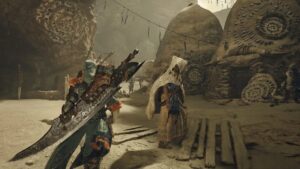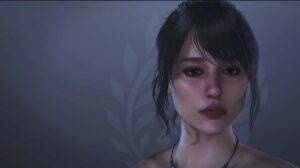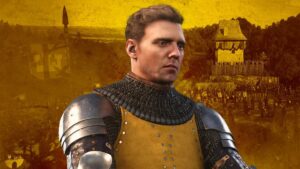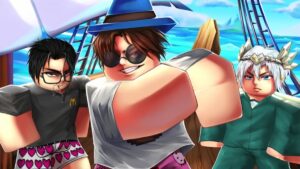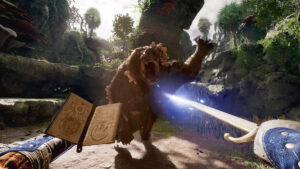
Image source: Nintendo
I used to consider myself a pretty big The Legend of Zelda fan. I’ve played practically all of the games (even those we fans don’t acknowledge). And I have a huge collection of figures, trading cards, and other Zelda collectibles, amassed over 15 years. But, to my great sadness, the series has gone in a different direction. One which, try as I have, I just can’t get on board with. Here are the reasons why I think that Zelda should return to its 3D roots.
A New Hyrule
First off, I should acknowledge the obvious. I know full well that my wish isn’t going to come true. The Legend of Zelda: Tears of the Kingdom was the fastest-selling Zelda game of all time, and its predecessor, Breath of the Wild, is by far the highest-selling Zelda game ever, with over 30 million copies sold. With a staggering commercial and critical reception, there’s just no reason for Nintendo to return to the old formula. But that doesn’t mean a fan can’t dream, right?
And, to clarify off the bat, I did play Breath of the Wild and Tears of the Kingdom. Quite a lot, actually. I sunk over 100 hours into BotW, as entranced by its vast rendition of Hyrule and challenging bite-sized shrines as I was frustrated by the lack of coherent storytelling and underwhelming dungeons. I only managed 40 hours in TotK before admitting to myself that I just wasn’t having fun. The frustration at the lack of focus and rehashed ideas became too much.
I understand that this is the direction the series is going in from now on. Renowned Legend of Zelda producer Eiji Aonuma has said as much a number of times since Tears of the Kingdom‘s release. But as much as I respect Mr. Aonuma and all he has done for the series, I think that key parts of the Zelda formula have been left behind with Breath of the Wild and Tears of the Kingdom.
The Flow of Time Is Always Cruel…
The Legend of Zelda: Ocarina of Time is my all-time favorite game. That’s not a particularly sensational statement given the pedigree of Nintendo’s first 3D Zelda title and all that it pioneered. But it’s true nonetheless. I’m still as besotted with Link’s time-hopping adventure now as I was when I first played it in 1998.
A common rebuff when I declare my love for Ocarina of Time is that nostalgia is coloring my judgment. Sure, that’s probably true. It definitely helped me through some tough juvenile times. There’s no doubt that some aspects, such as Hyrule Field’s limited design and the jagged graphics, haven’t aged particularly well.

But I’ve given considerable critical thought to why I love the earlier Zelda games, from Ocarina of Time through to The Wind Waker and beyond, so much. And, crucially, what they do better than Breath of the Wild and Tears of the Kingdom.
Why Zelda Should Return to Its 3D Roots
First, let me be clear about something: Breath of the Wild and Tears of the Kingdom do one thing very well. Despite Hyrule being so vast, they truly elicit a sense of exploration. There’s always the temptation to push on just a little further to see what’s over the brow of that hill, atop that plateau, or behind that waterfall. The earlier 3D Zelda games attempted this, but hardware and vision constraints limited the effectiveness.
That said, I do strongly believe that there are many things that the earlier Zelda titles do significantly better than either Breath of the Wild or Tears of the Kingdom.
A Storied History
First, the earlier Zelda games told far more interesting stories. Linear as opposed to true open-world design certainly helps in this regard, but it isn’t impossible to tell a compelling story in an open-world game. Take Horizon Zero Dawn, for example. Although inferior to Breath of the Wild when it comes to the freedom it offers, it told a linear, well-paced main story complemented by lore-building side stories.
Breath of the Wild‘s focus, and to a lesser extent Tears of the Kingdom‘s, is primarily on backstory – what came before the events of the game. This temporal distance just makes for a less compelling narrative.
You’re Not The Boss of Me
Second, the earlier Zelda games were famous for their incredible dungeon design and fearsome boss and miniboss encounters. Tears of the Kingdom and, in particular, Breath of the Wild, really drop the ball here.
Even though it was released 25 years ago, Ocarina of Time‘s Forest Temple, with its palpable sense of a place succumbing to nature, its twisting corridors and lurking Wallmasters, is head and shoulders above any of Breath of the Wild‘s underwhelming Divine Beasts. TotK improved on the dungeon front, but still suffered from a lack of enemy variety and an aggravating obsession with non-linear progression.
It’s the same with the boss design. Sticking with the Forest Temple in Ocarina of Time, the final boss, Phantom Ganon, rides his skeletal steed into and out six paintings in his first phase. How cool is that? Such creativity is completely absent when it comes to Breath of the Wild‘s bosses, who simply fight you in basic arenas. Tears of the Kingdom has a little more of the grandeur one would expect, with the Wind Temple’s Colgera being a standout, but it still lags behind Zelda games 25 years its senior.

Charm and Whimsy
Another crucial component of Legend of Zelda games is the cast of colorful, whimsical NPCs that Link encounters on his adventures. These larger-than-life characters bring the world to life, adding humor and pathos to what is often a grave situation.
Earlier Zelda games were littered with such memorable characters, from Anju and Kafei’s tragic romance in Majora’s Mask to the initially brash Groose with his heartwarming redemption arc in Skyward Sword. Even the more minor, one-dimensional NPCs were brimming with personality and charm.
At the risk of repeating myself, Breath of the Wild and Tears of the Kingdom lack in this department, too. There are a few standout characters, such as the nuanced Prince Sidon and the enigmatic Kass, but they’re too few and far between. The sheer scale of the two latest Zelda entries demands a vast cast of whimsical characters, but too many of them lack distinctive personalities. Too many are little more than exposition machines or quest givers.
A Sense of Direction
Mr. Aonuma has questioned why players wish to return to a “more limited or more restricted” version of the franchise. As hubristic as it may be to question the man who has become the “daddy” of Zelda, I can’t help but think he’s purposefully missing the point. It’s not just nostalgia, as Aonuma suggests. Restrictions breed creativity. And if Aonuma is referring to the previous games’ relative linearity, then it would be possible to make a new Zelda game more open without losing its sense of direction.
Direction is at the crux of the issue, in my opinion. BoTW and ToTK give the player all the tools they need to explore Hyrule, but precious little narrative direction to focus our attentions. Consequently, it’s all too easy to wander aimlessly around the vast world, unearthing intriguing secrets and completing satisfying shrines, but ultimately feeling rudderless.

The older 3D Zelda games had a clear sense of narrative direction and tangible stakes. The world, whether it be Hyrule of Termina, hadn’t been destroyed but was at grave risk of such a terrible fate. You always knew what your end goal was and the sequential nature of the narrative allowed for proper pacing and elevated stakes. BotW and TotK simply don’t have that. Nearly every foe and every corner of Hyrule is available immediately. As such, the onus is on the player to form their own direction, rather than Nintendo to craft a compelling experience that draws the player through the game.
All Hope Is Not Lost
Although it may be a stretch, I believe there’s still a faint glimmer of hope for us fans of the older 3D Zelda format. I can envisage a feasible potential scenario that may satiate our cravings.
First, Nintendo needs to finally release a much hoped-for The Legend of Zelda: Ocarina of Time remake. Or, at the very least, the heavily-rumored Switch versions of Gamecube classics Wind Waker and Twilight Princess. Next, they need to sell well. Realistically, they’ll never come close to matching Breath of the Wild or Tears of the Kingdom, but a few million sales would show the Big N that there’s still interest in the previous format.
If something like that were to happen, it’s possible that Nintendo could task a subsidiary studio like Retro Studios, who developed the incredible Metroid Prime and Donkey Kong Country: Tropical Freeze, with an offshoot series. It may sound far-fetched, but let’s not forget that Nintendo trusted Omega Force with doing just this with spin-off Hyrule Warriors: Age of Calamity. Although a completely different genre to the mainline action-adventure games, Age of Calamity was still canonical, closely overseen by Nintendo. There’s no reason, therefore, why Retro Studios couldn’t be trusted to develop a more linear dungeon- and story-focused Zelda entry.
To me, Breath of the Wild and Tears of the Kingdom will always feel like spin-offs. Hyrule Builders, if you will. With their strong focus on open-ended exploration, crafting, and creation, they have shifted the focus away from what The Legend of Zelda titles used to be. That’s not just nostalgia, by the way: They’re fundamentally different games. I just hope someone is allowed to take on the hallowed franchise and develop a game that returns to its roots. If that happens, that would make me one very happy fan.
